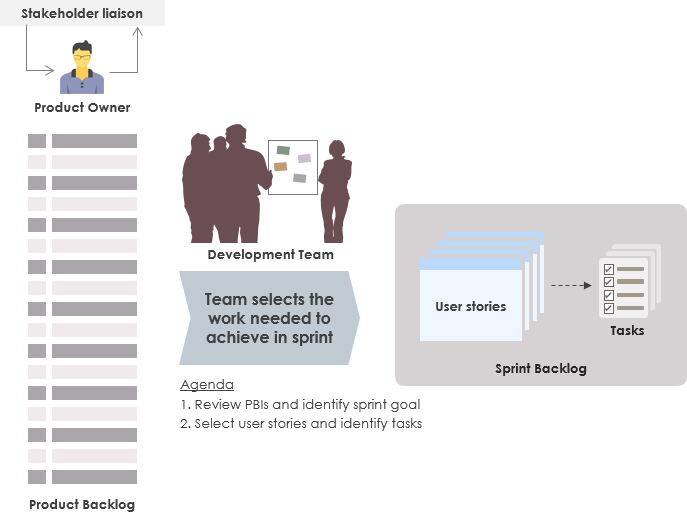Understanding the Dynamics: Product Backlog vs Sprint Backlog
Introduction
In the dynamic realm of Agile methodology, efficient project management is the key to success. Two crucial components that play a pivotal role in Agile development are the Product Backlog and Sprint Backlog. While they may sound similar, they serve distinct purposes in the Agile framework. Let’s delve into the intricacies of Product Backlog vs Sprint Backlog to comprehend their significance in the Agile development process.
Product Backlog
The Product Backlog is the overarching repository that encapsulates all the features, enhancements, and bug fixes that need to be addressed in the product. It serves as a comprehensive to-do list for the entire project and is managed by the Product Owner. The items in the Product Backlog are prioritized based on their importance and business value, allowing the development team to focus on the most critical tasks first.

Key features of the Product Backlog
- Dynamic Nature: The Product Backlog is a living document that evolves throughout the project. New items can be added, and existing ones can be reprioritized based on changing business needs.
- User-Centric: Items in the Product Backlog are typically described from the user’s perspective, emphasizing the value they bring to end-users.
- Prioritization: The Product Owner is responsible for prioritizing items in the Product Backlog based on business requirements, customer feedback, and market trends.
Sprint Backlog
In contrast, the Sprint Backlog is a subset of the Product Backlog. It represents the tasks and user stories selected for a specific iteration or sprint, which is a time-boxed development cycle in Agile. The Sprint Backlog is owned by the Development Team, who collaboratively decide which items from the Product Backlog to include in the upcoming sprint based on their capacity and capabilities.

Key features of the Sprint Backlog
- Fixed Scope: The Sprint Backlog is frozen for the duration of the sprint, meaning that once the sprint begins, no additional items can be added or removed.
- Concrete Tasks: Unlike the Product Backlog, the Sprint Backlog contains more granular tasks. It breaks down user stories into actionable items that the team can complete within the sprint.
- Time-Bound: Sprints have a fixed time frame, usually two to four weeks, during which the Development Team works to complete the tasks in the Sprint Backlog.
A Comparative Overview of Product Backlog and Sprint Backlog
Here’s the information structured in a table format:
| Aspect | Product Backlog | Sprint Backlog |
|---|---|---|
| Scope and Duration | Encompasses entire project scope; evolves | Represents a subset for a specific sprint; |
| throughout the product lifecycle; no fixed | fixed duration corresponding to the sprint. | |
| duration. | ||
| Ownership | Owned and managed by the Product Owner, | Owned by the Development Team; |
| responsible for prioritization based on | collaborative selection of tasks from the | |
| business value. | Product Backlog. | |
| Granularity | Contains high-level user stories, features, | Consists of granular tasks derived from user |
| and epics; described from a user’s | stories; specific, actionable, and achievable | |
| perspective. | within the sprint. | |
| Flexibility | Dynamic and flexible; allows constant | Fixed once the sprint begins; no changes |
| reprioritization and adjustments based on | allowed during the sprint. | |
| changing business needs. | ||
| Time Management | Time-agnostic; items can have varying | Time-bound to the duration of the sprint |
| timelines; not bound to specific sprints. | (typically two to four weeks). | |
| Focus | Emphasizes long-term vision and strategic | Focuses on short-term objectives; guides |
| goals of the project; aligns with overall | the team through a specific sprint towards | |
| product roadmap. | incremental goals. | |
| Responsibility | Product Owner is responsible for maintaining | Development Team collectively owns and |
| and refining; ensures alignment with | manages; ensures tasks are completed within | |
| business objectives. | the sprint. | |
| Change Management | Welcomes changes and adapts to evolving | Fixed once the sprint starts; changes |
| project requirements; items can be added, | deferred until the next sprint planning. | |
| removed, or reprioritized. |
This table provides a clear overview of the distinctions between the Product Backlog and Sprint Backlog in various aspects of Agile development.
Conclusion
In essence, while the Product Backlog focuses on the overall vision and long-term goals of the project, the Sprint Backlog hones in on the short-term objectives within a specific sprint. Both play integral roles in the Agile development process, ensuring a balance between strategic planning and focused execution. A well-maintained Product Backlog sets the direction, while an effective Sprint Backlog guides the team through iterative and incremental development cycles, ultimately delivering a product that aligns with customer expectations and market demands.

